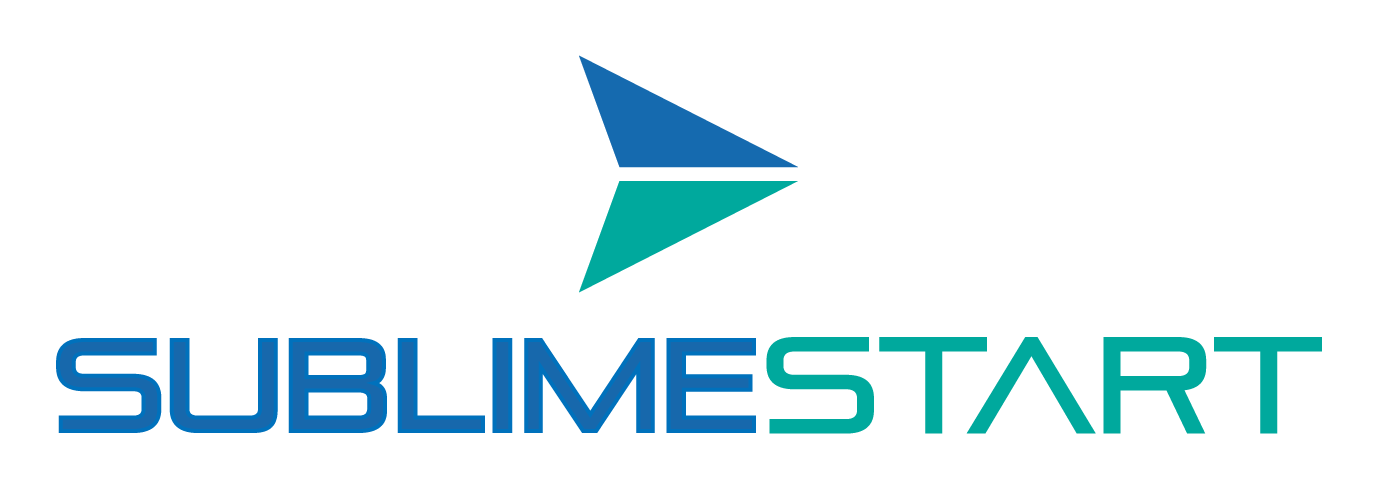11 steps to write your first blog post
A blog post is a very common component of websites and online marketing; over 7 million blog posts are posted daily. Blog posts communicate with website visitors and share specific news and information. Writing a blog post can be difficult, especially when you are not a person who likes to write. There are many tools, such as SEO tools and AI tools, that you can use to help you. However, these tools will limit your creativity and may result in limited results.
That’s why it’s always best to write articles yourself, but how to approach it? Well, in this article, you can find everything that you need to learn about getting started writing blog posts yourself.
What is a blog post?
First off, to write a blog post you need to understand what it is: A blog post is a written article published on a blog.
Blog posts can be anything from a personal story to an opinion piece, similar to articles in a newspaper or magazine. Blog posts are a great way to share your ideas and thoughts with the world, and they can help you build followers, increase brand awareness, and build trust.
Writing a blog post in 11 simple steps
To get you started quickly and help you better understand what needs to be done, here are the 11 basic steps to writing a blog post.
1. Choosing a topic
Before writing, choose a topic for your blog post. Think about what you want to write about and who your target audience is.
- What questions do they have?
- What problems do they need to solve?
- What content would be most useful to them?
- What are they looking for when they do keyword research on Google?
Another question is: what makes your blog post unique?
- Are you writing from a personal perspective?
- Are you sharing insider knowledge or tips?
- Is your blog focused on a specific niche?
There are many ways to get new ideas. Here are 7:
- Look at what’s trending: One way to develop ideas for your blog is to look at what’s trending. What are people talking about? What’s hot right now? You can use trends as a jumping-off point for your blog posts. Google Trends, keyword research, social media, and Quora are used to find out what is trending.
- Previous blog posts: If you already have other blog posts with topics that may or may not rank on Google, it is a good idea to look at how you can increase the content around those topics.
- Check out your competitors: See what topics your competitors are blogging about. This can give you a good idea of what’s popular in your niche and what people are interested in.
- Ask your readers: If you’re struggling to develop blog ideas, why not ask your readers? Send out a survey or poll asking them what topics they’d like to see you cover. This is a great way to get some ideas directly from the people who matter most — your readers!
- Brainstorm with a friend: Sometimes, it helps to brainstorm with a friend. Get together and bounce ideas off of each other. This can help jump-start your creativity and get the ideas flowing.
- Keep a list of ideas: Whenever you think of a potential blog post idea, write it down. This can be a great way to keep track of your ideas and make sure you don’t forget any of them.
- Blog post generator: Visit a blog topic generator that can help: Portent’s Content Idea Generator and HubSpot’s Blog Topic Generator.
2. Create a title
Your title is the first thing people will see. It stands at the top of your article. Make the title attention-grabbing and relevant to your post. A headline should make people want to read your blog post.
A good title will entice readers to click on your article and will also help you develop the idea of your blog post. Here are a few tips on how to write headlines that’ll make people want to read your blog post:
- Use keyword-rich phrases: Include keywords and phrases that people will likely search for. This will help your blog post show up in search engine results.
- Keep it brief: Your headline should be brief and to the point. Long headlines can be off-putting and hard to read.
- Use numbers and lists: People love lists! Include a number in your headline (e.g., “5 ways to…”) or make your blog post a list-style article.
- Be creative: Think outside the box when it comes to your headline. Be creative and unique to help your blog post stand out.
- Use a headline analyzer: If you’re unsure how effective your headline is, try using a headline analyzer tool. This can help you fine-tune your headline for the best results.
- Attention grabbing: The headline is the first thing people will see, so it’s important to ensure it’s attention-grabbing and relevant to your post.
If you are not able to get a good headline, don’t be to hard on yourself. You can try using a work title which is a temporary title that helps you to understand what you will be writing about. When you finish writing the article or whenever a more fitting title comes to your mind, you can change the working title.
3. Write the blog post outline
The blog post outline serves as the skeleton of your article. It gives structure to your article and makes it easier to write.
By starting with a blog post outline, you can ensure that your post has a clear structure and stays on topic. Sometimes, blogs provide overwhelming information. Organizing this info will help users avoid being intimidated by content that can be long and contain to much information. Here are the steps on how to write a blog post outline:
- Brainstorm some main points / main headings.
- Break down your main points into smaller points.
- Review your outline and make any necessary changes.
4. Write your body paragraphs
Your body paragraphs are the core of your blog post. Here is where you share new information.
Engaging is very important in the body paragraphs since it is the longest and most important part of your blog. The goal of the middle part is to support the main topic. In other words, it contains arguments, new information, evidence, examples, and ideas supporting your main thesis.
Here are a few tips on how to keep people engaged while they’re reading your blog post:
- Use short paragraphs: Long paragraphs can be off-putting and hard to read. Try to keep your paragraphs short to keep people engaged.
- Use subheadings: Subheadings help break up your blog post and simplify scanning, use them to highlight key points or sections of your post.
- Use bullet points: Bulletpoints are a great way to give information.
- Use interesting words and phrases: Avoid using too much jargon or technical language that people might not understand.
- Use storytelling: Share personal anecdotes, relatable experiences, or scenarios related to your topic.
- Use highlights: If it fits your blog post, use bold font or underlining to highlight the most important parts.
5. Write the introduction
The introduction is the opening paragraph of your blog post. Introduce your topic and briefly overview what the blog post will be about. Keep it short and to the point so that people will keep reading.
The first sentence of your blog post is important because it sets the tone for the rest of the piece. Here are a few tips on how to write an awesome opening for your blog post:
- Start with a bang: Try starting with a shocking statistic, bold statement, trendy catchphrase or newsworthy item.
- Use a hook: A hook is a short, interesting sentence that draws the reader in and makes them want to learn more.
- Be clear and concise: Don’t include too much information; information should be shared in the body paragraph. Get straight to the point and tell people what they can expect from your blog post.
- Set the scene: If you set your blog post in a specific time or place, use your opening sentence to give a brief description of the setting. This will help set the stage for the rest of the post.
- Introduce your topic: Introduce the topic of your blog post. Let people know what they will be reading about and why it’s important or interesting.
6. Write a conclusion
Conclusions should summarize what you’ve discussed in your blog post. It’s a good idea to leave your readers with something to think about so that they remember your blog post long after they’ve read it.
You want people to remember your blog post long after they’ve read it. Here are a few tips on concluding your blog post so people will remember it.
- Sum up your main points: Summarize the main points you covered in your blog post. This will help remind people of what they just read and help them remember it.
- Leave a lasting impression: End your blog post with a strong statement that will stay with the reader long after they’ve finished reading.
- Ask a question: Asking a question at the end of your blog post can encourage people to leave a comment or start a discussion. It is a good idea to foster engagement.
- Offer a solution: If you’ve discussed a problem in your blog post, repeat the solution at the end. This will help people remember the value you have offered.
7. Add call to actions
Having call to actions will inspire your target audience to take a desired action.
A CTA is a great way to encourage readers to interact with your blog and help them achieve their goals. Some ideas to create call to actions can be:
- Signing up for a newsletter
- Visiting another website
- Leaving a comment
- Vote on a pole
- Download an eBook
- Share on social media
- Learn more in another article
8. Choose images
Images will help your blog to look more visual. Your featured image is the main image associated with your blog post. Choose other images that are relevant to your topic and will grab the attention of your readers.
If you want your blog post to stand out, you can include images, infographics, or videos. Typically, articles that include fitting visuals are more successful than those without.
Visual elements can help break up the text and make your post more engaging. They can also illustrate points or provide additional information. Often Canva or Adobe is used to create visuals. You can also use sites like Pexels, Unsplash or Pixabay to find free images for your posts.
9. Edit and proofread your blog
Catch any mistakes, further optimize your post, and ensure your post makes a point.
Once you’ve written your post and added visuals, you can change it for better reading. There are several things you can do to improve your post further:
- Breaking your content into small paragraphs with descriptive headers makes it more scannable and easier to digest.
- Improve formatting features like bolding, bullet points, and italics to highlight important information.
- Proofread it for any errors, run a spell checker and grammar checker to catch typos or grammatical errors.
Once you’ve corrected any errors, take a step back and read your post again. Is it clear and concise? Does it flow well? Is the overall message clear? If not, consider making some edits to improve the clarity and quality of your content.
10. Perform Search Engine Optimisation
SEO will ensure more engagement on your blog through Google and Bing.
Within SEO you will perform some keyword research. Keyword research helps determine which keywords to target. This will help your blog post appear in search results when people look for that keyword. When you have your keyword you can:
- Include the keyword in your article:
- Titles: Include the main keyword or phrase you want to rank for.
- Descriptions: Besides a title, most blog platforms also allow you to add a short description of your post. Include relevant keywords here so readers can easily find your post.
- Optimize your images: Be sure to include relevant keywords in the filenames and alt text of any images you include in your blog post.
- Link to other relevant blog posts: Linking to other relevant blog posts can help improve your SEO. Add links to other articles on your site to help people find more of your content.
11. Publish your blog
Now it’s time to share your blog post with the world. Go to the website you have your blog, upload it and hit the submit button.
Try to promote it to get more traffic to your website. Here are a few ideas:
- Share it on social media: Social media is a great way to promote your blog post. Share it on your profiles and in relevant groups and forums.
- Force an index: Tell Google and Bing to index your website.
- Email it to your list: If you have a mailing list, send out an email blast promoting your latest blog post.
- Promote it on your website: Ensure you have a “share” or “subscribe” button on your website.
- Pay to promote it: To reach a wider audience, you can pay to promote your blog post on social media or with Google AdWords.
To conclude
Writing a blog post for the first time is often a challenging task, especially if you are not used to creating content. However, the 11 steps we describe in this article are very useful to get you started with your goal. From brainstorming captivating topics to optimizing your post for search engines and hitting that all-important publish button, this guide will walk you through each step of the process, ensuring a smooth and successful journey into the exciting realm of blogging.
If you want to learn more about writing and content, we invite you to read our article on blog post outline creation.






